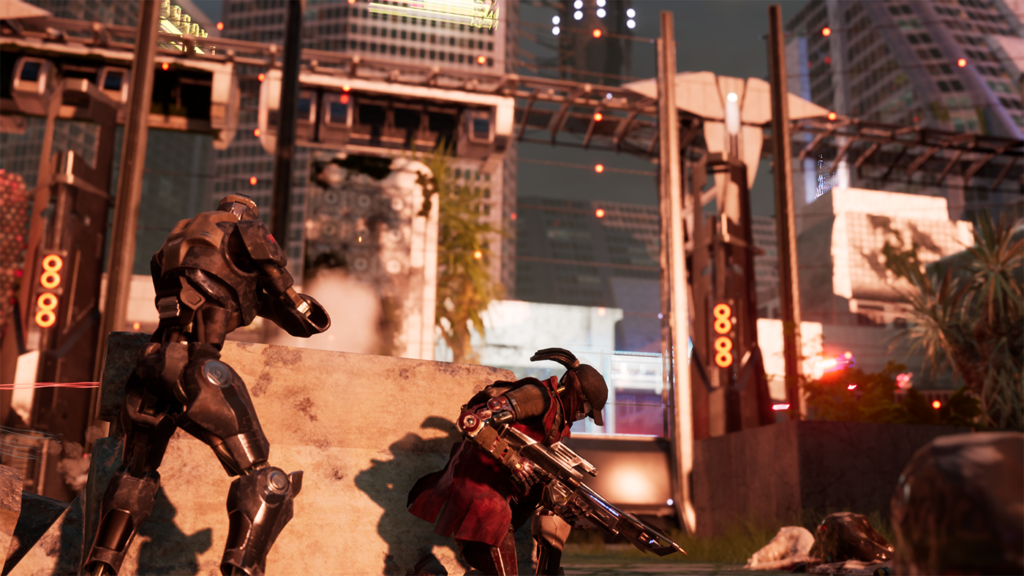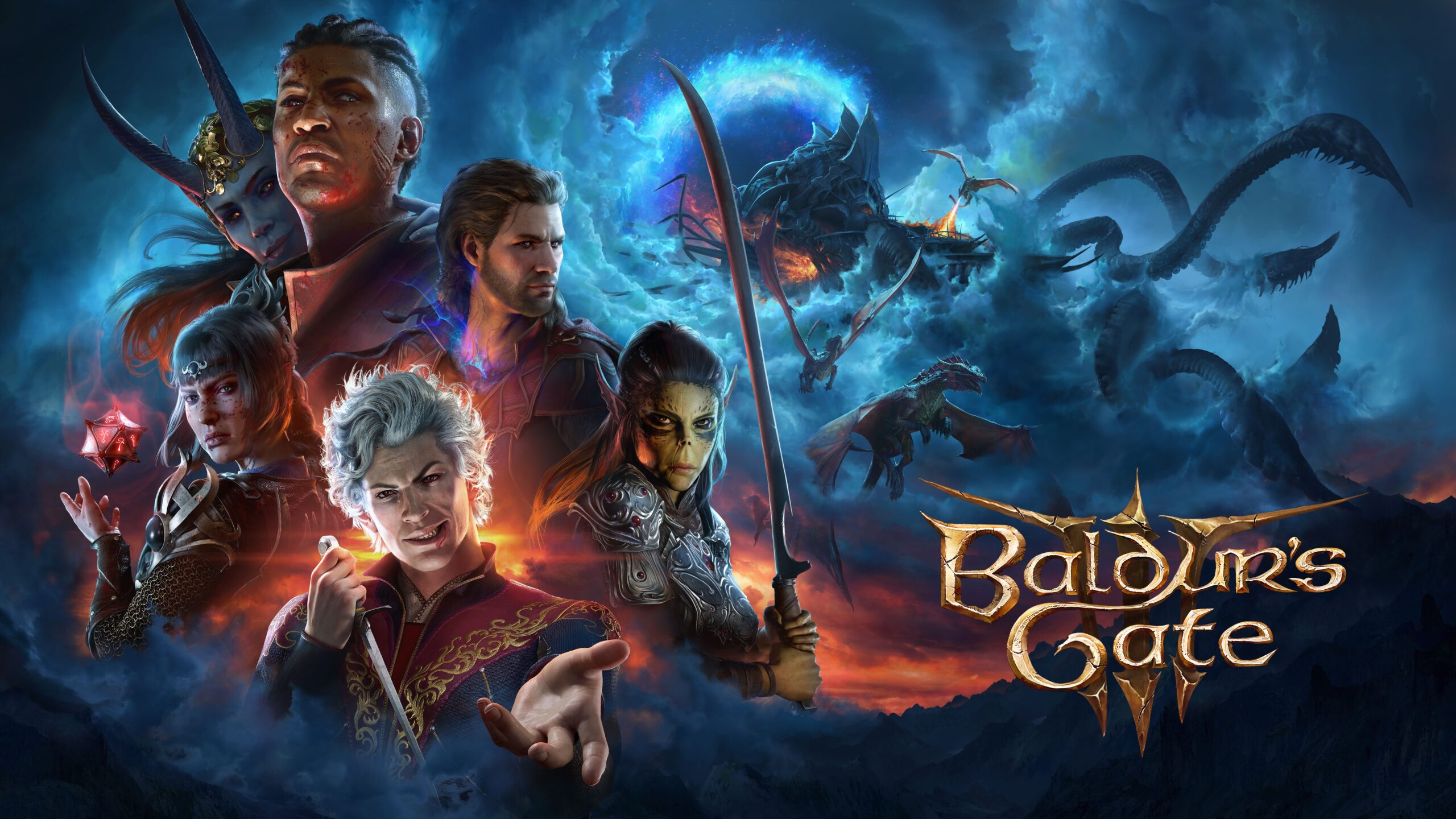
Review: Disintegration is an Ambitious Strategy FPS that Fails to Stay Above the Clouds
Disintegration, helmed by studio V1 Interactive and co-creator of Halo Marcus Lehto, really strives to be a mashup of a few beloved genres. Blending both first-person shooter and real-time strategy mechanics, it tries to create something new. There are unique story and combat elements that seem interesting at the start, but they’re never executed in a satisfying way. It shoots for the stars, but a cliche campaign, tedious combat, and unstable gameplay make Disintegration fall short of being as special as it wants to be.
The game begins with laying out the condition of its world’s inhabitants. Integration, we’re told, is a process where a person can move their mind from a human body into a more “superior” robotic one, if they so choose. We’re then launched into the role of protagonist Romer Shoal, a former celebrity and Gravcycle rider, who is being tortured by a man he calls Black Shuck. We don’t know why this is happening or how Romer even got himself into this situation, we can only assume Black Shuck is the antagonist from his jet black armor and forceful insistence that Romer join him — very Darth Vader-esque. From here, things happen ridiculously abruptly with no explanation. An explosion allows Romer to escape with a group of integrated robots we are told nothing about, only left to guess that they’re fellow prisoners with the same goal he has. We don’t really learn what that is either before they’re pushed into joining a resistance group. At this point, we only know things are bad up in the sky with Black Shuck since he wants to force Integration on everyone. Apparently it’s up to Romer and his crew to fight back.

It’s obvious V1 wants it’s characters’ personalities to shine through both Disintegration’s cutscenes and mission dialogue, but they’re all personalities we’ve seen time and time again. The integrated outlaws Romer travels and fights with all feel oddly exaggerated, as if they’re trying to poorly imitate a Pixar movie. You’re paired with a number of characters like Agnes, who follows tropes of being the group’s sassy black woman tired of everyone else, and Coqui, the Latino comic relief whose lines bounce from being overly chatty to egregiously stilted. I found the head of the resistance, Waggoner to be the most frustrating to be around. The campaign focuses a large amount around the elderly, human black man leading this crew against evil robotic forces, giving bits of snark and wisdom as he does so, but the game tells you as little about him as it does the others. After appearing from the woods, he encourages the team to be better individuals while constantly (and bafflingly) nudging Romer into a leadership role, simply because he’s a celebrity that everyone’s familiar with. Romer himself is just as barren as a protagonist. We never really learn more about his celebrity status or motivations prior to the story beyond the fact that he used to ride Gravcycles.
Disintegration pushes for a robust world and lively cast but assumes the player can put together scattered puzzle pieces on who everyone is through its overused sci-fi tropes. It acts as if there’s extensive lore to be found through characters and environments, but instead offers one-note conversations from its characters that only hint at friendships and character development. What could have been an emotional campaign about resistance and the power of choice ends up feeling sorely lacking and underwhelming.
The concept of Disintegration’s combat is intriguing, mashing together the feel of a first-person shooter alongside RTS tactics, but it ends up feeling incredibly repetitive and sluggish. You pilot a Gravcycle, a hovercraft of sorts, and are constantly moving, shooting, and scanning the environment for enemies and resources. The main draw to the gameplay is how it hinges on you calling the shots. In this “pilot leader” role, you command up to 4 characters where to go and who to fight across the map. You’re able to order them to focus on a specific enemy, send healing pods their way, or even engage in battle yourself shooting guns from the Gravcycle in average FPS fashion. Each of your teammates also has a special ability, like time-slowing fields or concussion grenades that players can execute to manage fighting swarms of enemies easier.

At first, I felt really engaged by the gameplay – if you’re not paying attention to both what’s in front of you and the wider landscape, you can get overwhelmed and lose your entire team. After about three missions though, sending your units to crowds of the same four enemy types became monotonous. Your team always moves as a group, so you can’t break individual members away to do separate attacks if you wanted to, which feels counterintuitive to the multitasking approach V1 is going for. The abilities your teammates are given are also unexciting and while the landscapes themselves change across the levels, the swarms of robots approach and attack the same way, leaving things to be effortless and boring. I also realized that even though I was given a cool futuristic plane to pilot, it moves SO very slow — even with a boost ability — with no way to upgrade its speed. I’ve got to question why this decision was made when V1 clearly wanted Disintegration to be an active experience that kept you on micromanaging on your toes. Unless you move it to the highest difficulty, it just feels dull slowly floating around to support your team.
Sadly, Disintegration also has a list of unstable technical issues that affect both its narrative and gameplay. I was told it has game crashing tendencies on an i5 processor, and playing on a PC with an i7 processor, I didn’t think much of it. I still encountered problems with audio during cutscenes loading and invisible walls suddenly spawning and pushing me back after I had moved to an area. Characters outside of cutscenes also had jarring animation loops at certain points which made their dialogue off sync and made them look more like puppets than people. The biggest issue I felt was when I was using a controller – which the game wants you to do. Not only was the PC version struggling to recognize it over a mouse and keyboard, but I had to tweak aiming sensitivity multiple times in the tutorial settings. If I hadn’t, the gameplay would’ve been twice as slow as it already feels.
V1’s Disintegration is a unique, ambitious FPS experience I wanted to like. By expanding its narrative and its concept of being a real time strategy with a mechanic like the Gravcycle, it could’ve been a frantic, fluid, and fun gamechanger in the FPS genre. It’s a shame both Disintegration’s shallow story and gameplay weren’t integrated properly.
Disintegration review code for PC provided by the publisher.
Disintegration is out June 16 on PS4, Xbox One, and PC





